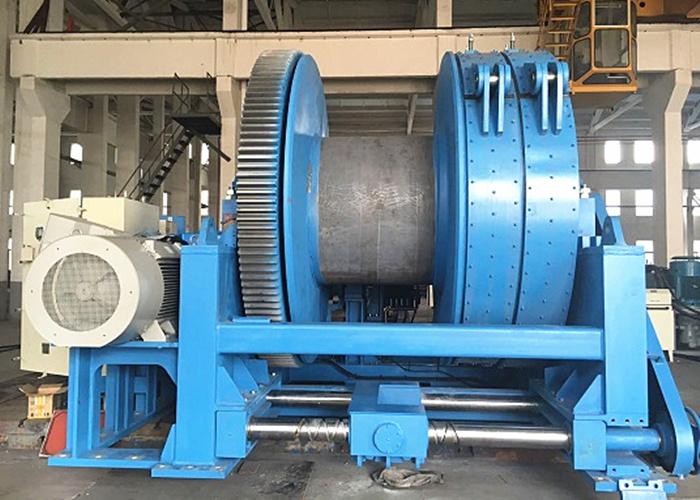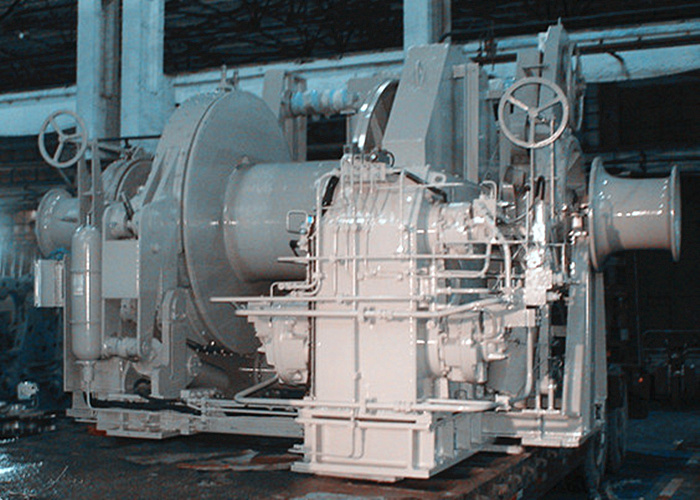Transporting a winch 100 ton is a complex logistical challenge that requires careful planning, coordination, and specialized equipment. A winch of this size and weight is typically used in heavy-duty applications such as construction, mining, offshore operations, and shipbuilding. Whether moving the winch within a facility or transporting it to a remote location, several factors must be considered to ensure safe and efficient transportation. Let’s explore some of the best ways for transporting a winch 100 ton:

Route Planning and Assessment
Before transporting a winch 100 ton, it’s essential to conduct a thorough route assessment to identify any potential obstacles, restrictions, or hazards along the way. This includes assessing road conditions, bridge clearances, weight restrictions, and any other factors that may impact the transportation process. By carefully planning the route in advance, you can avoid delays, minimize risks, and ensure a smooth transportation operation.
Selection of Transport Mode
The transportation mode chosen for moving a winch 100 ton will depend on factors such as distance, terrain, and accessibility. Common transport modes for heavy equipment like winches include flatbed trucks, lowboy trailers, rail transport, and ocean shipping. Each mode has its advantages and limitations, so it’s essential to evaluate the specific requirements of the transportation task and select the most suitable mode accordingly.
Specialized Transport Equipment
Transporting a winch 100 ton requires specialized equipment capable of handling heavy loads safely and securely. This may include hydraulic trailers, multi-axle lowboy trailers, or self-propelled modular transporters (SPMTs) equipped with hydraulic suspension systems and steering mechanisms. These specialized trailers can distribute the weight of the winch evenly, minimize stress on the road surface, and navigate tight corners or obstacles more effectively.
Permitting and Regulatory Compliance
Moving oversized or overweight loads like a winch 100 ton typically requires obtaining permits and complying with regulatory requirements imposed by local authorities and transportation agencies. This may include obtaining oversize load permits, route surveys, and coordinating with law enforcement agencies for escort services. Compliance with these regulations is crucial to ensure legal operation and prevent any potential fines or penalties.

Safety Precautions and Risk Mitigation
Safety is paramount when transporting heavy equipment like a winch 100 ton. It’s essential to implement appropriate safety precautions and risk mitigation measures to protect personnel, equipment, and the public. This may include securing the heavy duty winch properly to the transport vehicle using heavy-duty chains, straps, or tie-downs, as well as using escort vehicles to provide traffic control and ensure safe passage along the route.
Professional Transportation Services
Due to the complexity and specialized nature of transporting a winch 100 ton, it’s often advisable to enlist the services of professional transportation companies with experience in handling heavy and oversized loads. These companies have the expertise, equipment, and resources necessary to plan and execute the transportation operation safely and efficiently. They can also provide valuable assistance with route planning, permitting, and regulatory compliance.
Coordination and Communication
Successful transportation of a winch 100 ton requires effective coordination and communication between all parties involved in the process. This includes the transportation company, equipment operators, escorts, regulatory agencies, and any other stakeholders. Clear communication ensures that everyone understands their roles and responsibilities, minimizes the risk of errors or misunderstandings, and facilitates a smooth transportation operation.
On-Site Installation and Assembly
Once the winch reaches its destination, it may require on-site installation and assembly, depending on the specific application. This may involve using cranes, forklifts, or other lifting equipment to position the winch in place and secure it to its foundation. Proper installation is critical to ensure the safe and reliable operation of the winch and should be carried out by qualified personnel following manufacturer guidelines and industry best practices.
In conclusion, transporting a winch 100 ton is a complex undertaking that requires careful planning, specialized equipment, and adherence to safety and regulatory requirements. By following the best practices outlined above, including route planning, selection of transport mode, compliance with regulations, and coordination with professional transportation services, you can ensure the safe and efficient transportation of a winch 100 ton to its destination. Effective communication and collaboration between all parties involved are essential to overcoming challenges and achieving successful outcomes in heavy equipment transportation projects.